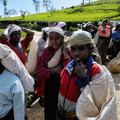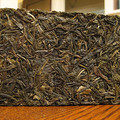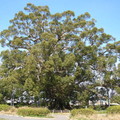Quotes - Tea infusion
„Most of the meditation techniques are using the very same principles we need to perform a good gongfu cha: calm, concentration and a ritual. No wonder we can achieve a very similar outcome! Under good conditions, what emerges is our real Me, speaking from the bottom of our heart. We become the Chinese ideal, a zhen ren, a true man (or woman). We have no needs, no desire. We are fulfilled with the simple happiness of a cup of tea.“
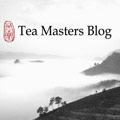
Quotes Tags: Experiencing tea, Tea infusion, Tea infusion, Tao, Tea infusion
„Most of the meditation techniques are using the very same principles we need to perform a good gongfu cha: calm, concentration and a ritual. No wonder we can achieve a very similar outcome! Under good conditions, what emerges is our real Me, speaking from the bottom of our heart. We become the Chinese ideal, a zhen ren, a true man (or woman). We have no needs, no desire. We are fulfilled with the simple happiness of a cup of tea.“

Quotes Tags: Experiencing tea, Tea infusion, Tea infusion, Tao, Tea infusion
„Most of the meditation techniques are using the very same principles we need to perform a good gongfu cha: calm, concentration and a ritual. No wonder we can achieve a very similar outcome! Under good conditions, what emerges is our real Me, speaking from the bottom of our heart. We become the Chinese ideal, a zhen ren, a true man (or woman). We have no needs, no desire. We are fulfilled with the simple happiness of a cup of tea.“

Quotes Tags: Experiencing tea, Tea infusion, Tea infusion, Tao, Tea infusion
„To master the skill of gongfu cha, one needs all his senses and a great amount of concentration. As we gain experience, our movements become more automatic, like rituals. We can brew tea without really thinking, like we drive our car. In a calm setting, our mind is focused on the tea we brew. The choice of a good tea, the harmony of the tea set we use, the way we beautifully arrange the tea table... everything heightens our concentration and peace of mind.“

Quotes Tags: Experiencing tea, Tea infusion, Tao
„Beyond the senses, tea is also a cultural and spiritual pleasure that can open the doors to many other areas. “

Quotes Tags: Tea infusion, Experiencing tea
„Hearing:
It's the sound of soon to boil water, and then the flowing in the gaibei and the cups. It's also the sound of tea bags, of porcelain. And then it's the sound of silence during the tasting...“

Quotes Tags: Tea infusion, Experiencing tea
„Touch:
You, the person brewing the tea is entitled to touch the tea leaves with (clean) hands. What does this contact tell you about the tea? (For me, a 'heavy', compact leave is a sign for a good quality tea.)
Then there is the pleasure of touching the porcelain and to feel it in your mouth. Do you notice how a cup with a different shape will change the taste and pleasure of the tea? And can you find which cup is best for your tea (I tend to prefer old and thin cups).“

Quotes Tags: Tea infusion, Experiencing tea
„Taste:
Sweet: on the tip of the tongue. Lingering mellow taste: How does it evolve over time? Acidity/astringency: on the back and on the sides of the tongue. What defect does the tea have? Yun/cloudiness: How is the finish? Are there any special feelings after the tea has left your mouth? Dry feeling: do you experience dryness in the mouth and throat?“

Quotes Tags: Tea infusion, Experiencing tea
„Smell:
The hot tea leaves: after pouring the tea from the gaibei. Again, a different smell! You can also smell the empty gaibei: a strong smell means that the leaves could have been brewed a few more times.
The empty cup: you can use it as a wen xiang bei! The empty pitcher can also be used as a big wen xiang bei!“

Quotes Tags: Tea infusion, Experiencing tea
„Smell:
Dry leaves: smell the leaves before you brew them. You can smell them before and after you put them in the heated gaiwan.
The gaibei's lid: lots of fragrant smells accumulate below the lid. Smell and you'll know when the tea is ready. You can also smell it after you pour the tea out.
The tea: interestingly, the brew doesn't smell as strong as the lid or the empty glass!“

Quotes Tags: Tea infusion, Experiencing tea
„Sight:
Shape of dry leaves: Put the leaves you intend to brew on a small plate or in a tea cup. Then look at the leaves, their color, their shape...
Color of the tea (in the cup): Is this a beautiful, lively color?
Clarity of the tea: How shiny, how pure is the tea brew? “

Quotes Tags: Tea infusion, Experiencing tea
„Gongfu cha is an interactive pleasure for our 5 senses.“

Quotes Tags: Tea infusion, Experiencing tea
„In the Western market, tea drinkers often end up buying a few pots in the beginning that don’t quite “fit.”
Maybe the size is wrong, the clay is poor, or is simply not a match to any of our desired teas. Perhaps the shape and craftsmanship are just not pleasing to us.
Owning bad teapots, experienced collectors will remind you, is “tuition” that helps you start to recognize better teapots from the others.“
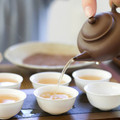
Quotes Tags: Pu-erh, Tea infusion, Experiencing tea
„hui gan; 回甜 - Hui 回- return, come back, reply. 甜, gan-sweet. Together - sweet return, sweet aftertaste. Used generally to refer to the aftertaste of tea, be it sweet or not.“
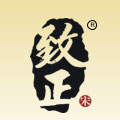
Quotes Tags: Tea infusion, China, Experiencing tea, Pu-erh
„gong fu; 功夫 - The skill or art of tea making. The same two characters are used to refer to other fields of skill development. Most commonly to the field of self defence.“

Quotes Tags: Tea infusion, Yunnan, China
„gaiwan; 盖碗 - literally lid-bowl. A steeping bowl with a lid. They generally come in two or three sizes. The most common is 140cl/4oz. The lid is used to clear off any extraneous materials that may float to the surface on flushing and initial steepings. These (1 or 2) are typically not drunk. The lid is then used to partially strain the tea by holding it a little to one side as one pours the tea off through a fine strainer into a gong dao bei (共道杯) or decanting jug.“

Quotes Tags: Tea infusion, China
„cha yi; 茶仪 - Tea ceremony. Not generally used to refer to the daily habit of tea making and drinking. Most habitual tea drinkers would be unlikely to use this term in reference to their tea-making activities. Not common parlance in Yunnan tea making circles“

Quotes Tags: Tea infusion, China, Experiencing tea, Pu-erh
„cha shi; 茶室 - Literally tea room. A tea shop. Also sometimes a brothel. Japanese friends who were so acquainted have told me that in China Town in Bangkok, up until a few years ago, there were a handful of such establishments, where one ostensibly went to drink tea, but could avail oneself of further diversions. Apparently, the tea was not up to scratch.“

Quotes Tags: Tea infusion, Teahouse, China
„cha pan (zi); 茶盘(子) - Tea tray. The tray with a drainage system - normally a simple pipe- that is used when making tea. Usually made from bamboo, wood or stone.“

Quotes Tags: Tea infusion, China
„cha men (zi); 茶闷(子) - Another term for Gaiwan. 闷;men - to cover tightly.“

Quotes Tags: Tea infusion, China
„cha ju; 茶具 - Literally tea-tools. The paraphernalia for making tea gong-fu style“

Quotes Tags: Tea infusion, China
„cha hu; 茶壶 - Tea pot. Made of porcelain, pottery or glass. Yixing pots are used for both cooked and raw Puer. Since they are pourous, the pots absorb flavours and chemicals from the tea. If one is serious about using Yixing pots, particularly for sheng Puer, one needs to be ready to get at least two pots - one for older and one for younger teas. And these should not be used for brewing other teas, and vice-versa. Yixing teapots will typically soften the flavours of sheng Puer.“

Quotes Tags: Sheng - Raw Puerh, Shu - Ripe Puerh, Tea infusion, China
„The container in which the tea is steeped or teapot should also be warmed beforehand so that the tea does not immediately cool down.“
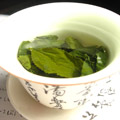
Quotes Tags: Green tea, Tea infusion
„It is common practice for tea leaf to be left in the cup or pot and for hot water to be added as the tea is drunk until the flavor degrades.“

Quotes Tags: Green tea, Tea infusion
„High-quality green teas can be and usually are steeped multiple times; two or three steepings is typical.“

Quotes Tags: Green tea, Tea infusion
„Steeping green tea too hot or too long will result in a bitter, astringent brew, regardless of the initial quality.“

Quotes Tags: Green tea, Tea infusion
„In general, lower-quality green teas are steeped hotter and longer, while higher-quality teas are steeped cooler and shorter.“

Quotes Tags: Green tea, Tea infusion
„Green tea steeping time and temperature varies with different tea. The hottest steeping temperatures are 81 to 87 °C (178 to 189 °F) water and the longest steeping times two to three minutes. The coolest brewing temperatures are 61 to 69 °C (142 to 156 °F) and the shortest times about 30 seconds.“

Quotes Tags: Green tea, Tea infusion
„Steeping is the process of making a cup of tea; it is also referred to as brewing. In general, two grams of tea per 100 ml of water, or about one teaspoon of green tea per five ounce cup, should be used.“

Quotes Tags: Green tea, Tea infusion
„Hui Gan 回甘, Hui Tian 回甜, Sheng Jin 生津, & Hui Yun 回韻…In literally term, Hui Gan, sometimes referred to as Hui Wei, is to reflect sweetly on a past event. Borrowing from the term 'to reflect', Hui Gan in tea is, simply put, a reflection on the sweetness of the tea - when one drink the tea, when the tea slides through the cavity of the mouth into the throat, there comes, after a short while, a sweetness that rises up from the throat. This sweetness is sometimes accompanied with a fragrance. Do not keep the upper and lower mouth pressed together when sipping tea, but create a cavity instead by lowering the jaw. Let the tea wash over the entire inside of the mouth, and then direct the tea to slide from the sides of the jaw into the throat. While holding the empty cavity, breathe out instead of in after you swallow the tea, there is warmth in the breath accompanied by a fragrance, and the same fragrance that rises up from the throat. This is Hui Gan.“
Quotes Tags: Pu-erh, China, Tea infusion, Experiencing tea
Teas
2013 Spring Hekai Gu Shu Mao Cha
 1 review
1 reviewThe mao cha were picked on the same day from the same tea garden. Light yellow liquor with rich scents of...
2014 Darjeeling Rohini Exotic SFTGFOP1
 1 review
1 reviewExclusive collection of the youngest gardens in Darjeeling processed from fresh buds of cultivar...
2006 Langhe TF Meng Hai Chitse Beeng Cha
 1 review
1 reviewThis is one of classic recipe from Langhe tea factory which is similar with 8542 from Dayi. This tea is...
Theme
Tea by region
We will help you with tea selection.
Do you like quality loose tea?
We will help you to find the right one for you. Be inspired by tea ratings of other tea lovers. Rating stars could help you.


Review your cup of tea.
Review the tea you are drinking and help other tea lovers to find the right cup of tea.



Quotes
„ji qi sha (de); 机器杀(的) - Machine fried. Most tea famers have a machine for the sha qing process, which is generally an electrically driven revolving drum, fired by a wood fire. Machine fried tea is probably better than poorly hand fried tea, but lacks the possibility of the more tactile method of hand frying.“



 Shops
Shops Share on Facebook
Share on Facebook






